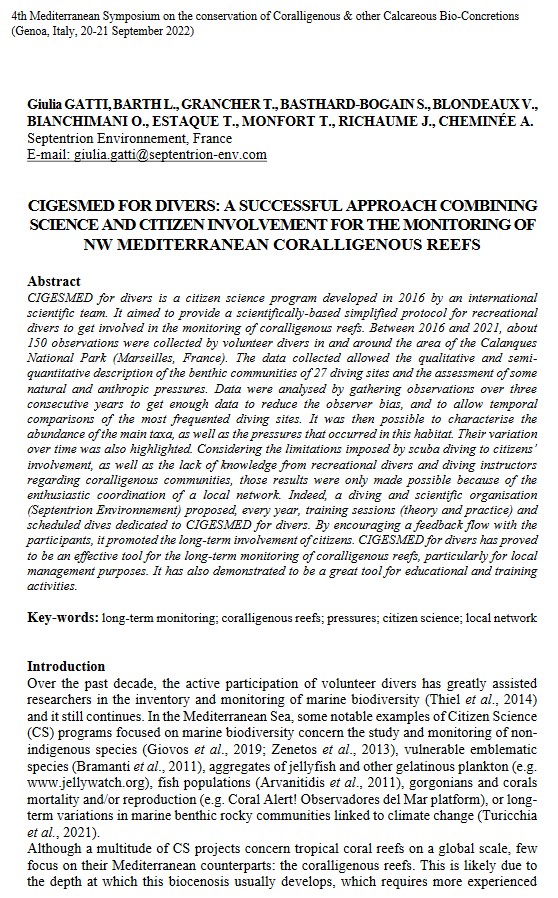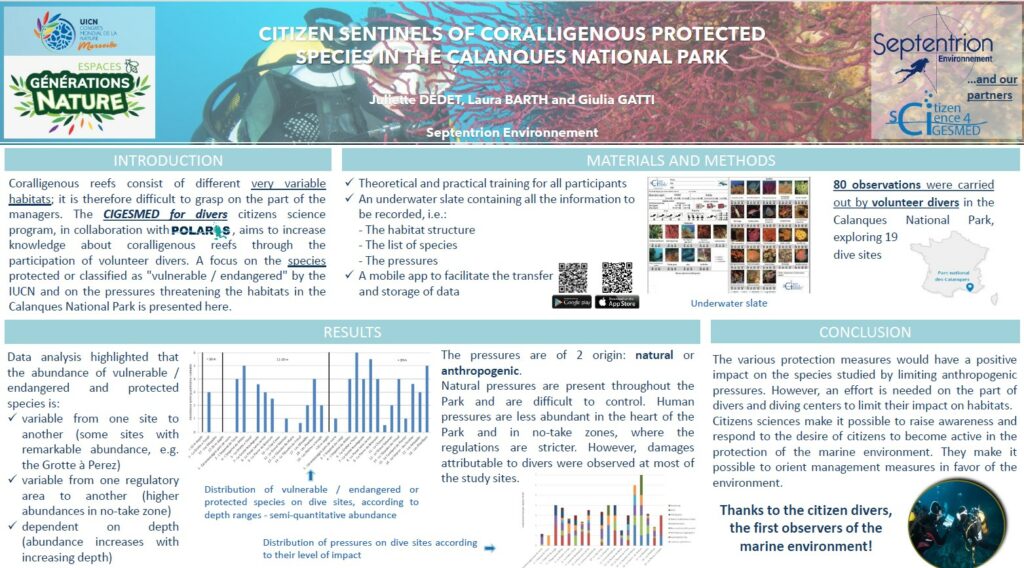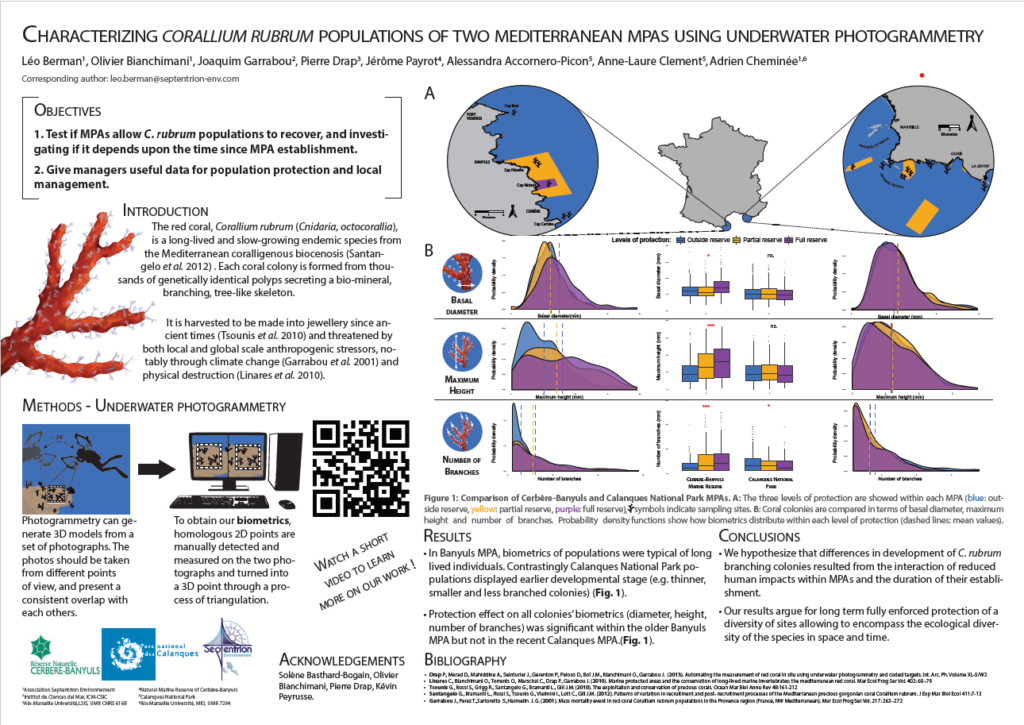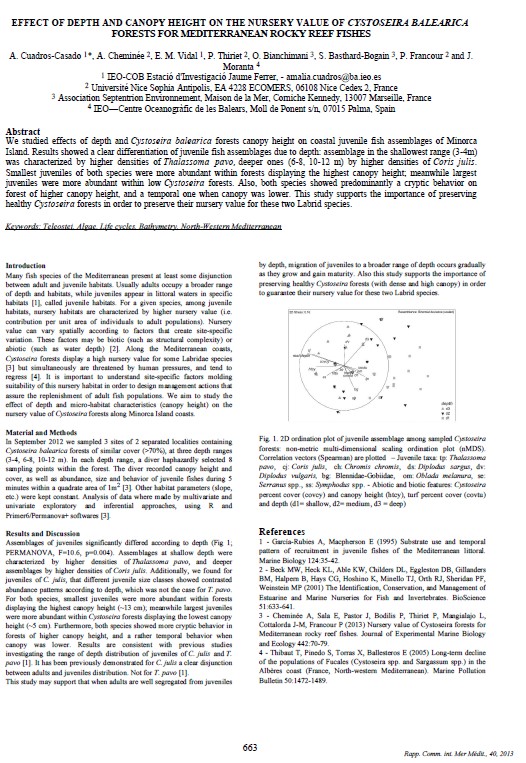Gatti G., Barth L., Grancher T., Bastard–Bogain S., Blondeaux V., Bianchimani O., Estaque T., Monfort T., Richaume J., Cheminée A.
CIGESMED for divers is a citizen science program developed in 2016 by an international scientific team. It aimed to provide a scientifically–based simplified protocol for recreational divers to get involved in the monitoring of coralligenous reefs. Between 2016 and 2021, about 150 observations were collected by volunteer divers in and around the area of the Calanques National Park (Marseilles, France). The data collected allowed the qualitative and semi–quantitative description of the benthic communities of 27 diving sites and the assessment of some natural and anthropic pressures. Data were analysed by gathering observations over three consecutive years to get enough data to reduce the observer bias, and to allow temporal comparisons of the most frequented diving sites. It was then possible to characterise the abundance of the main taxa, as well as the pressures that occurred in this habitat. Their variation over time was also highlighted. Considering the limitations imposed by scuba diving to citizens’ involvement, as well as the lack of knowledge from recreational divers and diving instructors regarding coralligenous communities, those results were only made possible because of the enthusiastic coordination of a local network. Indeed, a diving and scientific organisation (Septentrion Environnement) proposed, every year, training sessions (theory and practice) and scheduled dives dedicated to CIGESMED for divers. By encouraging a feedback flow with the participants, it promoted the long–term involvement of citizens. CIGESMED for divers has proved to be an effective tool for the long–term monitoring of coralligenous reefs, particularly for local management purposes. It has also demonstrated to be a great tool for educational and training activities.




